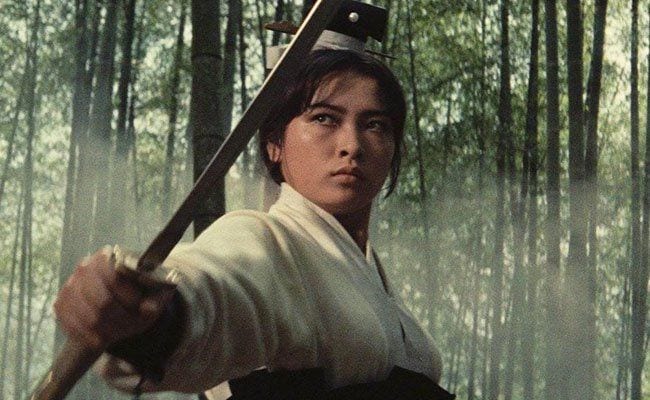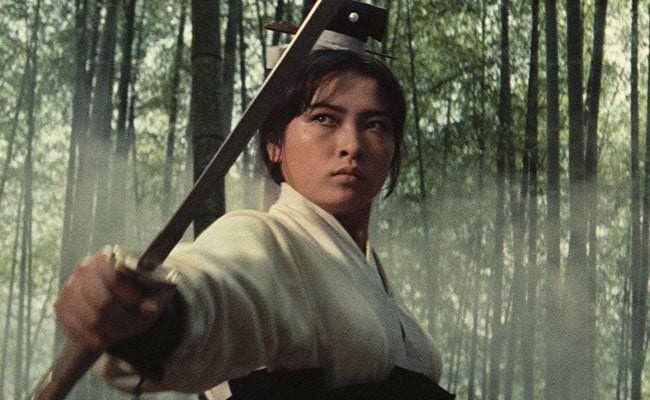
Every couple decades, it seems that Western audiences rediscover Asian films. By the time that Asian cinema enjoyed its overseas resurgence about 20 years ago, there wasn’t any room left for the wuxia films. These classically inspired and rococo period action films, replete with magic and the supernatural, had been Hong Kong film industry mainstays in the ’60s. But they were supplanted by the faster, more individualistic martial arts genre typified by Bruce Lee that took over in the ’70s, and later the gonzo bullet ballets of Tsui Hark and John Woo.
Both later genres were the styles made most popular in America by midnight screenings, grainy VHS dubs passed around to collectors, and Quentin Tarantino references starting in the late ’80s. What Western audiences thrilled to, at a time when Hollywood was at its most sclerotic and risk-averse, was films’ bursting and blending of genre conventions, their heat-seeking eagerness to entertain by any means necessary and to hell with the laws of cinema.
There wasn’t much room left in that short-attention fan space for the gracious tonal poetry of King Hu’s wuxia films. This is a shame. Because when it comes to gravity-free fight scenes and a whole-hearted engagement with the prerogatives of cinema to entertain and enthrall, a film like Hu’s nearly forgotten 1971 masterpiece A Touch of Zen, with its astonishing action choreography and otherworldly mysticism, gives even the overcaffeinated likes of Hard Boiled or Drunken Master II a run for their money.
Things open with a hint of ’50s-era Kurosawa. Hu shows us, in no particular hurry, the ruins of a ravaged and nature-captured fort and the small market town still getting by next to it. Ku (Chun Shih) is a well-trained but unambitious scholar who is happy enough with his little storefront (letter and couplet writing, plus portraiture) and not interested in getting married or securing his future by going for the big civil service exam. Events overtake his lassitude, though, when the beautiful if standoffish Yang (Feng Hsu) arrives in town.
There’s a hint here, in Hu’s relaxed manner, of an old Hollywood master taking his sweet time setting the mood. He adds characters and dialogue carefully, a mysterious stranger here, a meddling mother there. Otherwise he focuses on the serene atmosphere, tumbledown buildings, hints of hauntings at the old fort, and rustling grasses as though he had all the time in the world; supposedly Hu waited nine months for the grass at the fort to grow exactly right.
In this first quiet hour, Hu lays the almost too careful groundwork for the action scenes that explode into these by-then familiar spaces during the second hour. The exquisite 2014 restoration presented in this Criterion release brings all of Hu’s vivid colors and layered mise-en-scene to the fore, capturing the verdant Taiwanese landscape in breathtaking splendor; even if it can’t clean away Hu’s quite obvious but neatly danced-around budget limitations, such as the occasional smudge on the camera lens.
The story that Hu rigs the events of A Touch of Zen on are, as is common, crafted from classic Chinese literature. In this case, Hu adapted from Strange Stories from a Chinese Studio, Pu Songling’s 18th-century compilation of older supernatural “marvel stories” in which magic predominated alongside social satire of corrupt government officials. Hu’s screenplay manages to be both convoluted and spare, but eventually sets up the conflict that will drive the remaining two-thirds of the film.
Eventually, it’s revealed to the none-too-sharp Ku that Yang is on the run from corrupt magistrates who want her dead. Ku realizes something is amiss after witnessing her in a sword fight with another mysterious stranger in which the two battle over rooftops in classic floating wuxia fashion. It’s a swirling piece of action dance, delicately handled, and a sign of greater wonders to come.
Although commonplace now, the idea of a forthright action heroine like Yang was unusual in the rigidly formulaic Shaw Brothers-style action films that Hu had broken away from in the ’60s. Even more unusual was Hu’s presentation of Yang as not just every bit as capable and stern-faced as the film’s male warriors, but also forthright in her sexuality; after a one-night fling with the besotted and maxim-spouting Ku, she tells him in no uncertain terms to forget about it.
The film’s second third comes as a relief after the deliberate mannerisms and fussy perfectionism of the first third. Here, A Touch of Zen pivots from quiet pastoral with supernatural elements to more John Sturges Western. As villainous forces marshal against Yang and the two fugitive generals who came to her aid, Ku uses his study of classic works of strategy to plan their defense. The set-piece battle in which the small army of guards—the dialogue claims there to be 200, but Hu is clearly using the same couple dozen extras multiple times over—are lured into the supposedly haunted fort for a spectacular night-time ambush is a marvel of geometric precision and subterfuge.
Hu builds from hushed beginnings to multiple peaks through an impressive linkage of well-executed set pieces whose technical elan elevates their visual and thematic poetry. The justifiably famous fight scene in a bamboo forest, which mixes widescreen beauty and elliptical cutaways with sharp action, deserves to be taught as a standalone example of combat poetry. He also tweaks styles as he goes, progressing from the first third’s stately decorousness to the middle section’s classically mainstream showdown of outnumbered heroes against throngs of corrupt villains and finally into the more curious avant-gardeism and spirituality–embodied by the addition of an impressively serene but combat-ready Zen abbot—in the concluding section’s tightly-packed fight scenes.
Hu’s command of wuxia action grammar is impressive, though focused more on jumping and bounding (thanks to tiny trampolines hidden just below the camera frame) than the wirework-assisted superhuman leaps more common to the genre. As David Bordwell notes in the Criterion essay, Hu wasn’t interested in the usual shaolin fighting styles and instead drew on the tradition of Chinese opera. He mixes extremely tight fight choreography and classic kung-fu reaction shots with choppy whip-pans and jump cuts that feel straight out of a class on Eisenstein montage. Hu flirts with overambition when he starts threading in a surreal religiosity (think Jodorowsky with more sincerity and no need to shock) that nearly upends the whole enterprise.
A classicist who was also a decent artist and excellent calligrapher himself, Hu brought a patient painter’s eye to his work. That makes it no surprise that the similarly visually attuned Ang Lee (as he discusses in one of the interviews on the Criterion release) was motivated to riff on A Touch of Zen’s fight in the bamboo forest for Crouching Tiger, Hidden Dragon’s treetop battle scene between Zhang Ziyi and Chow Yun-Fat, whose romanticism is highly indebted to Hu.
Being the adept genre-shifter, Lee could translate wuxia’s idiosyncracies to a mainstream audience in a way that Hu couldn’t, or wouldn’t. Incredibly, when A Touch of Zen first opened, the studio released it in two sections a year apart. Given how long Hu took to get his story moving, it’s hard to imagine audiences coming back for more after the very slow-paced first installment concluded with the bamboo fight scene, exhilarating though it was.
After that disastrous release, the film gained a little more attention when it played in its full version at Cannes in 1975, though it sank into semi-obscurity afterwards. Although its spiffed-up limited arthouse run earlier this year and now the canonical Criterion release won’t exactly give A Touch of Zen anywhere close to the broader success of a Woo or Lee, it’s at least a long-overdue acknowledgment of the film’s singular place in film history.


![Call for Papers: All Things Reconsidered [MUSIC] May-August 2024](https://www.popmatters.com/wp-content/uploads/2024/04/all-things-reconsidered-call-music-may-2024-720x380.jpg)



